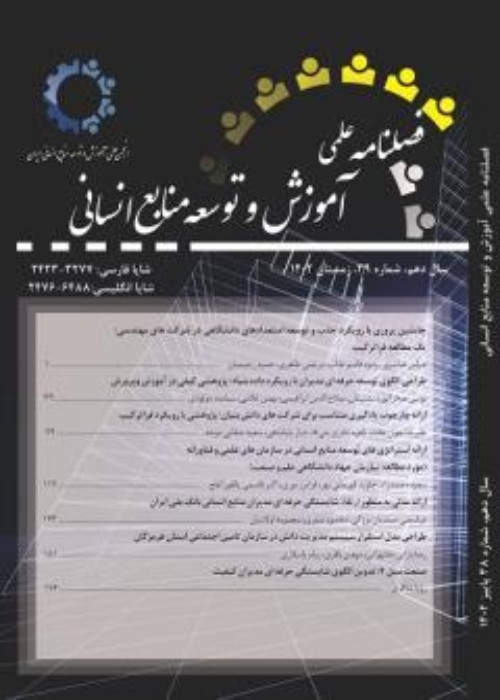An Analysis of the Employee Training and Development System in Iranian Organizations (The Status Study)
Author(s):
Abstract:
The main objective of this study is to evaluate the current status of the employee training and development system in Iranian organizations. The study deploys a descriptive research design and a combination of survey approaches including field study, interviews, focus groups, longitudinal study and trend analysis for data collection. The main basis for data collection and analysis is a Training and Development Excellence Model, which is used for evaluating the organizations under study. The statistical population of the study is comprised of all Iranian organizations that are active in five businesses; services, manufacturing, health and medicine, finance and insurance, and education. Moreover, these organizations are categorized into (1) large and (2) small- and medium-sized enterprises (SMEs) each of which are further divided into private and public businesses. According to this algorithm and using a combinational approach, 20 organizations are selected as the sample population from the four categories described above via purposeful single-stage cluster sampling. Apart from literature review, methods such as interviews and focus groups are conducted in the evaluation process. The collected data are analyzed for descriptive statistics including the indicators of central tendency and dispersion. Furthermore, levels of excellence are analyzed with radar logic. The results indicate that the status of training situation differs for types of business, sizes of enterprise and types of organizational ownership. Of the five types of business, organizations active in the banking and financial sector scored highest on three key indicators of training performance: the average direct cost of training per employee, hours of training per employee, and the ratio of trained employees to the total staff. Organizations active in the manufacturing sector had the highest performance only in the key indicator of the ratio of trained employees to the total staff. Moreover, large-sized organizations had a better performance than SMEs and private organizations had a better performance than public organizations in all the four indicators of performance. The findings also suggest that organizations active in banking and finance, manufacturing, health and medicine, education, and services have shown the lowest degree of overall satisfaction with training performance.
Keywords:
Language:
Persian
Published:
Iranian Society for Training and Development, Volume:2 Issue: 6, 2016
Page:
25
magiran.com/p1477327
دانلود و مطالعه متن این مقاله با یکی از روشهای زیر امکان پذیر است:
اشتراک شخصی
با عضویت و پرداخت آنلاین حق اشتراک یکساله به مبلغ 1,390,000ريال میتوانید 70 عنوان مطلب دانلود کنید!
اشتراک سازمانی
به کتابخانه دانشگاه یا محل کار خود پیشنهاد کنید تا اشتراک سازمانی این پایگاه را برای دسترسی نامحدود همه کاربران به متن مطالب تهیه نمایند!
توجه!
- حق عضویت دریافتی صرف حمایت از نشریات عضو و نگهداری، تکمیل و توسعه مگیران میشود.
- پرداخت حق اشتراک و دانلود مقالات اجازه بازنشر آن در سایر رسانههای چاپی و دیجیتال را به کاربر نمیدهد.
In order to view content subscription is required
Personal subscription
Subscribe magiran.com for 70 € euros via PayPal and download 70 articles during a year.
Organization subscription
Please contact us to subscribe your university or library for unlimited access!



